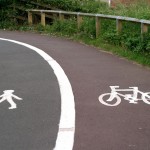
Introduction
This guidance has been prepared for commissioners and all staff providing lifestyle advice in primary care, including community health and allied health professionals, such as physiotherapists. It aims to raise awareness of the issues caused by inactivity, not just for individuals, but for the health service and economy as a whole, and provides a set of five recommendations for staff to apply. This is a partial update of “Four commonly used methods to increase physical activity”.
Implications of inactivity
Exercise is good for the mental and physical well-being of everyone, and to reap the benefits, daily activity for all adults over 19 years, should amount to at least two and a half hours per week. This does not mean that people need to join a gym and attend regularly. Physical activity includes walking or cycling, household maintenance, gardening, dancing; anything that increases your heart and breathing rates. By not exercising, people are at greater risk of obesity, heart disease, diabetes, stroke, depression, stress-related disorders, cancer, and musculoskeletal conditions. Each of these conditions leads to a much poorer quality of life for people, and a higher burden of cost for the health service.
Recommendations
Based on the NICE guidance and research, this brief advice, introduces five recommendations:
- Identifying adults who are inactive – this could be done when people visit the GP surgery or as part of the management of long-term conditions.
- Delivering and following up on brief advice – emphasise the benefits and tailor it to suit the individual.
- Incorporating brief advice in commissioning – incorporate brief advice about physical activity into the care pathway.
- Systems to support brief advice – when issuing brief advice on physical activity, make sure this is recorded on the patient record so that it can be followed up on future visits.
- Providing information and training – this should include emphasising their role in encouraging people to be more active, and also methods for dealing with people who are more likely to be inactive.
This brief advice document goes into much greater detail on how these recommendations can be implemented, and cross-references throughout.
Exercise is such an easy and healthy way to improve well-being, and as such this guidance has an important role to play.
Commentary
Although quite long, as opposed to brief advice, this is a clearly laid out document providing the justification for these recommendations, and identifying which staff should apply them. Primary care staff and commissioners should read this report and identify which recommendations apply to them. Think about what changes you can make in your practice to support increased activity in your patients. There are so many benefits to the public and the health service, and by helping those who can be active, you will have more time to spend with those who are not fit enough to be fully active.
Link
Physical activity: brief advice for adults in primary care (PDF)
NICE public health guidance 44
National Institute for Health and Care Excellence
May 2013
Supporting material
Four commonly used methods to increase physical activity
NICE public health guidance 2 (partially updated by PH41 and PH44)




